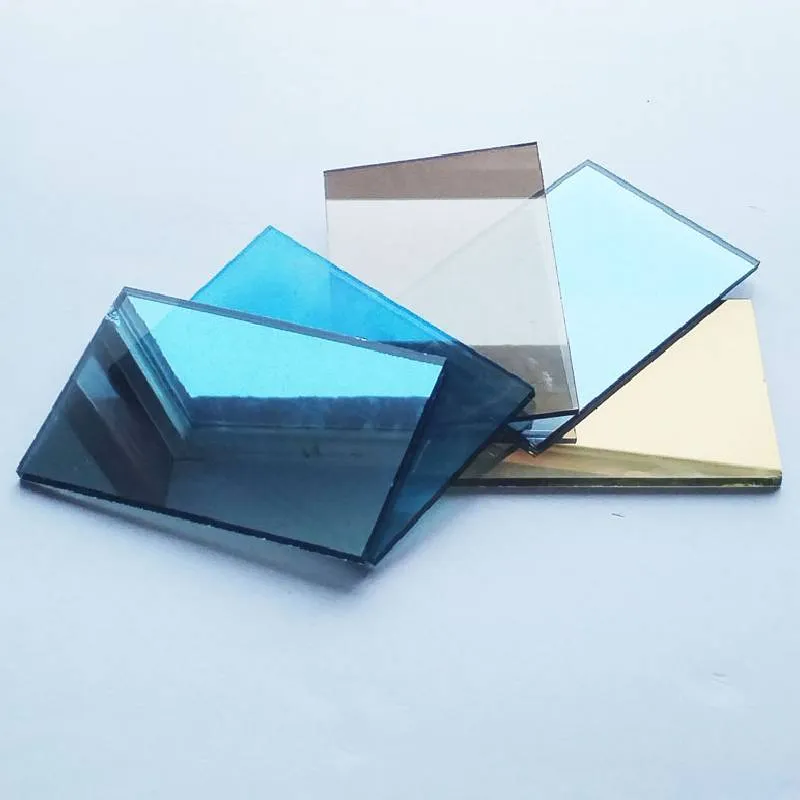Tempered Glass and Laminated Glass An Overview of Two Essential Materials
In the world of construction and design, glass plays a pivotal role not only in aesthetic appeal but also in functionality and safety. Among the various types of glass used, tempered glass and laminated glass stand out due to their unique properties and advantages. This article aims to provide an overview of these two essential materials, exploring their production processes, applications, and benefits.
Tempered Glass Strength and Safety
Tempered glass, also known as toughened glass, is produced through a specific thermal treatment process that enhances its strength compared to normal glass. The process involves heating the glass to over 600 degrees Celsius and then rapidly cooling it. This controlled thermal shock creates internal compressive stresses that significantly increase the glass's resistance to impact and thermal stress.
One of the most significant advantages of tempered glass is its safety features. When broken, tempered glass shatters into small, blunt pieces rather than sharp shards, reducing the risk of injury. This characteristic makes it an ideal choice for environments that require a higher level of safety, such as glass doors, shower enclosures, and facade applications.
Another notable property of tempered glass is its ability to withstand high temperatures. It can endure extreme thermal fluctuations, making it suitable for applications like stove doors and ovens. The aesthetics of tempered glass are also appealing, as it typically has a clearer and more elegant appearance compared to other types of glass, thus making it a popular choice in modern architectural designs.
Laminated Glass Versatility and Security
Laminated glass, on the other hand, is made by sandwiching a layer of polyvinyl butyral (PVB) or other interlayers between two or more layers of glass. The layers are then subjected to heat and pressure, causing them to bond together. This process results in a composite material that offers distinct advantages over standard glass.
tempered glass and laminated glass
One of the primary benefits of laminated glass is its excellent sound insulation properties. The interlayer used in laminated glass effectively reduces noise transmission, making it an ideal choice for buildings located in noisy environments, such as urban areas or near highways. Additionally, it provides a significant level of UV protection, blocking up to 99% of harmful ultraviolet rays, thus helping to protect interior furnishings and reduce fading.
The security offered by laminated glass is another crucial consideration. In the event of breakage, the interlayer holds the glass together, preventing shards from falling out. This makes laminated glass an effective barrier against forced entry, making it a favored choice for commercial establishments, banks, and even residential properties that prioritize security.
Applications and Considerations
Both tempered and laminated glass have numerous applications across various industries. Tempered glass is commonly used in high-traffic areas and places where safety is paramount, including schools, hospitals, and shopping malls. It is also favored in the automotive industry for vehicle windows and windshields, where strength and clarity are crucial.
Laminated glass, due to its versatile properties, is utilized in a wide range of applications. It can be found in skylights, glass floors, and partitions, where sound reduction and safety are critical. Furthermore, its use in facades allows architects to design striking buildings with enhanced safety features.
When choosing between tempered and laminated glass, considerations such as safety requirements, thermal exposure, noise reduction, and aesthetic preferences play a significant role. Each type of glass complements different architectural and functional needs, making it essential for designers and architects to evaluate their specific requirements.
Conclusion
In summary, tempered glass and laminated glass are two vital materials that contribute to modern architecture’s safety, aesthetics, and functionality. Their unique properties and advantages make them ideal for different applications within the construction industry. As building codes and safety regulations continue to evolve, the demand for both tempered and laminated glass is expected to grow, paving the way for innovative uses and designs in the future. Whether for enhancing safety, improving sound insulation, or simply beautifying spaces, these two types of glass are undeniably integral to contemporary design.
 Afrikaans
Afrikaans  Albanian
Albanian  Amharic
Amharic  Arabic
Arabic  Armenian
Armenian  Azerbaijani
Azerbaijani  Basque
Basque  Belarusian
Belarusian  Bengali
Bengali  Bosnian
Bosnian  Bulgarian
Bulgarian  Catalan
Catalan  Cebuano
Cebuano  Corsican
Corsican  Croatian
Croatian  Czech
Czech  Danish
Danish  Dutch
Dutch  English
English  Esperanto
Esperanto  Estonian
Estonian  Finnish
Finnish  French
French  Frisian
Frisian  Galician
Galician  Georgian
Georgian  German
German  Greek
Greek  Gujarati
Gujarati  Haitian Creole
Haitian Creole  hausa
hausa  hawaiian
hawaiian  Hebrew
Hebrew  Hindi
Hindi  Miao
Miao  Hungarian
Hungarian  Icelandic
Icelandic  igbo
igbo  Indonesian
Indonesian  irish
irish  Italian
Italian  Japanese
Japanese  Javanese
Javanese  Kannada
Kannada  kazakh
kazakh  Khmer
Khmer  Rwandese
Rwandese  Korean
Korean  Kurdish
Kurdish  Kyrgyz
Kyrgyz  Lao
Lao  Latin
Latin  Latvian
Latvian  Lithuanian
Lithuanian  Luxembourgish
Luxembourgish  Macedonian
Macedonian  Malgashi
Malgashi  Malay
Malay  Malayalam
Malayalam  Maltese
Maltese  Maori
Maori  Marathi
Marathi  Mongolian
Mongolian  Myanmar
Myanmar  Nepali
Nepali  Norwegian
Norwegian  Norwegian
Norwegian  Occitan
Occitan  Pashto
Pashto  Persian
Persian  Polish
Polish  Portuguese
Portuguese  Punjabi
Punjabi  Romanian
Romanian  Russian
Russian  Samoan
Samoan  Scottish Gaelic
Scottish Gaelic  Serbian
Serbian  Sesotho
Sesotho  Shona
Shona  Sindhi
Sindhi  Sinhala
Sinhala  Slovak
Slovak  Slovenian
Slovenian  Somali
Somali  Spanish
Spanish  Sundanese
Sundanese  Swahili
Swahili  Swedish
Swedish  Tagalog
Tagalog  Tajik
Tajik  Tamil
Tamil  Tatar
Tatar  Telugu
Telugu  Thai
Thai  Turkish
Turkish  Turkmen
Turkmen  Ukrainian
Ukrainian  Urdu
Urdu  Uighur
Uighur  Uzbek
Uzbek  Vietnamese
Vietnamese  Welsh
Welsh  Bantu
Bantu  Yiddish
Yiddish  Yoruba
Yoruba  Zulu
Zulu 

